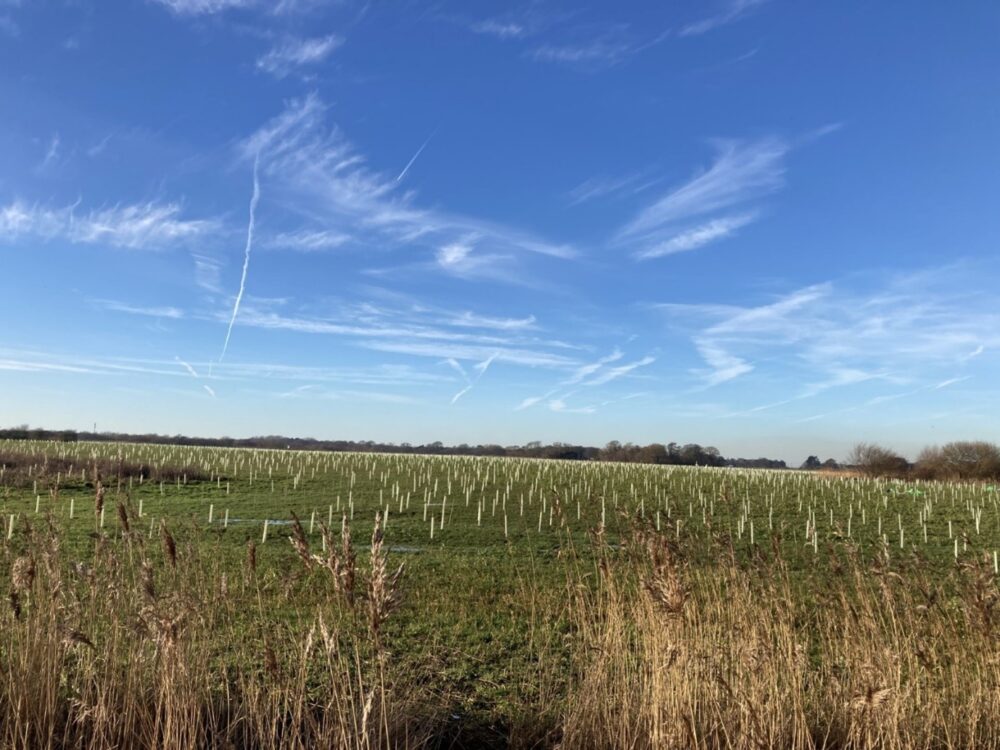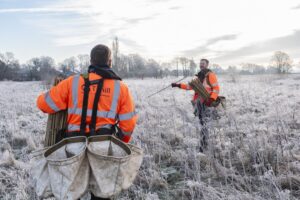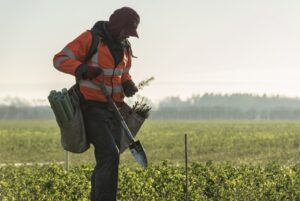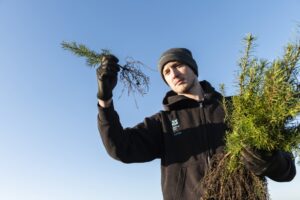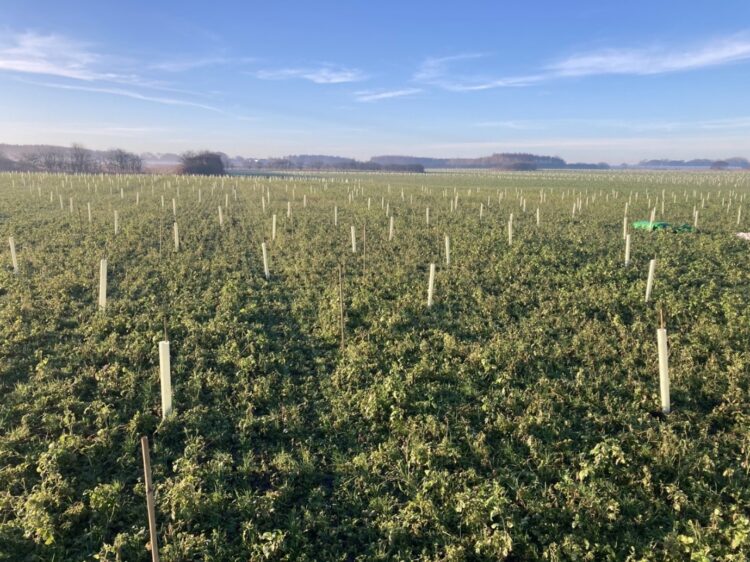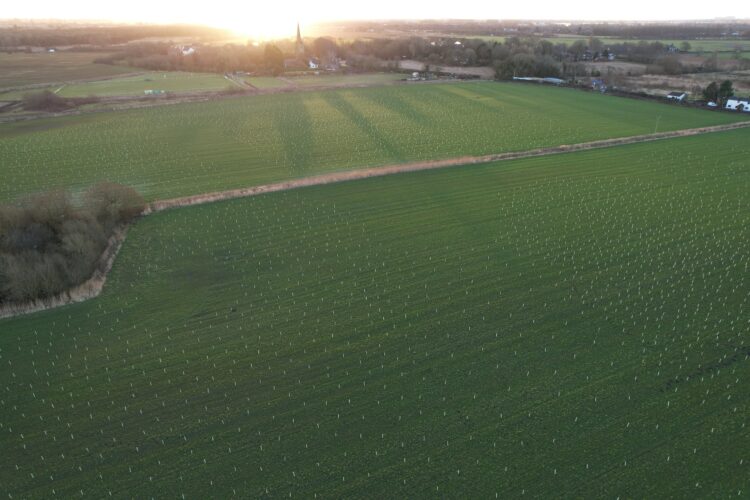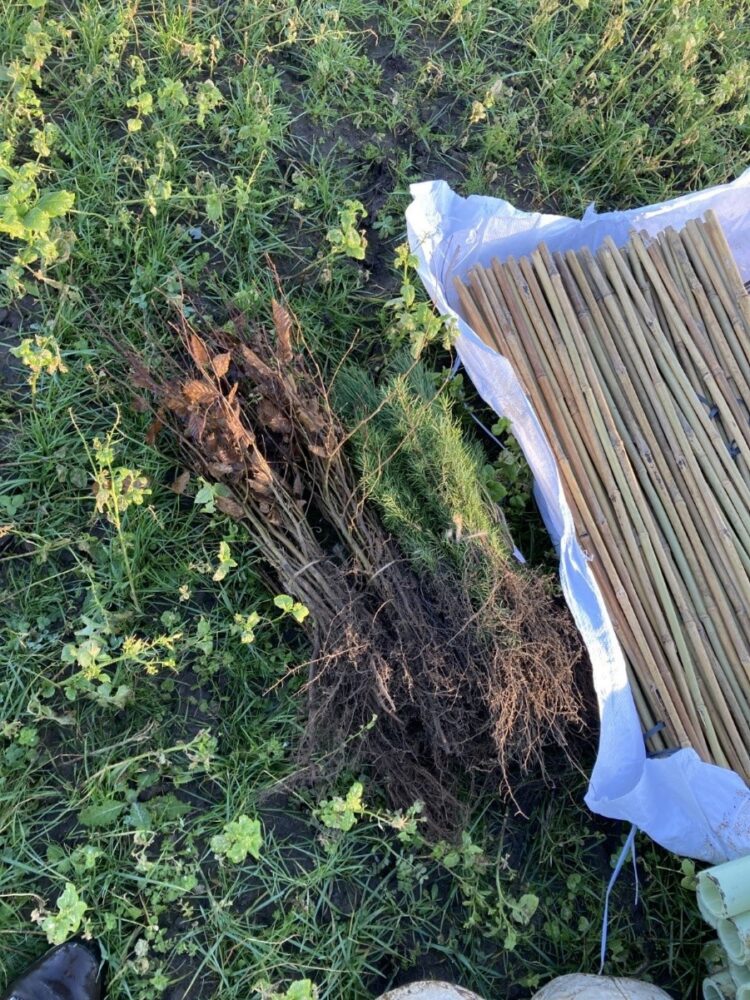Tilhill Forestry, a leading name in sustainable woodland creation, has been commissioned by the National Trust to work on several new woodland creation projects across England, including White Leas on the Durham Coast, March Haigh in West Yorkshire, Dovedale in Derbyshire, and Shugborough in Staffordshire.
The latest project awarded by the National Trust is to establish 78 hectares of new woodland in Lunt, Sefton, Liverpool. This pioneering initiative is part of a wider strategy to enhance biodiversity, flood resilience, and carbon sequestration, whilst creating new green spaces for local communities to enjoy.
Funded through the DEFRA Trees for Climate programme, through the Mersey Forest team, as well as HSBC UK and National Trust’s ‘Plant a Tree’ appeal, this ambitious project represents a major step towards sustainable land management, providing significant ecological and social benefits.
Matt Farrell, Senior Forest Manager, and Lucy Marsden, Assistant Forest Manager at Tilhill Forestry, played a pivotal role in overseeing the management of the delivery of the new woodland as part of a broader landscape-scale initiative. This ambitious project, in collaboration with the National Trust, aims to enhance the surrounding environment by promoting biodiversity, improving public access, increasing carbon sequestration, and strengthening flood resilience.
Our experienced and highly skilled forest planting and establishment contractor efficiently completed the woodland’s implementation within just three weeks during the winter of 2025, and will be involved in maintenance programme for the next five years.
Enhancing Biodiversity and Wildlife Conservation
A key objective of this project is to restore and expand wildlife habitats, establishing a diverse mosaic of woodlands and wetlands. This approach supports a broad range of species, from native birds and insects to rare flora and even red squirrels, should conditions allow.
Key Ecological Benefits:
- Wetland and Grassland Restoration: Enriching species-rich grasslands and wetlands to foster diverse ecosystems.
- Land Connectivity: Working alongside Lancashire Wildlife Trust, Forestry England, and the Environment Agency to link existing land areas.
- Wildlife Corridors: Creating safe passage for species across land, connect existing habitats and create new forest areas that link with current woodlands and wetlands to promote ecological resilience.
The careful selection of tree species ensures that different areas—whether dry, wet, or shrubland—are best suited to local environmental conditions, maximising long-term sustainability.
Recreational and Community Engagement Benefits
Beyond its environmental impact, this project places a strong emphasis on community engagement and public recreation.
- Woodland Walks & Paths: The planting scheme was thoughtfully designed to incorporate existing public paths, while also creating opportunities for the future development and enhancement of pathways to further encourage public enjoyment and accessibility.
- Forest School Initiative: A dedicated Forest School area is planned to encourage outdoor education and engagement with local schools, clubs, and charities.
- Preserving Key Vistas & Heritage Views: Thoughtful tree planting ensures that important scenic views—such as those towards the historic church—remain unobstructed, maintaining the area’s character.
By fostering active community involvement, this project encourages public appreciation for woodland conservation whilst promoting outdoor activities and well-being.
Tree Species and Planting Strategy
To ensure maximum ecological benefit, 93,000 trees have been planted across 46.5 hectares, carefully chosen to align with soil conditions and biodiversity requirements.
| Woodland Type | Tree Species |
| Dry Woodland | Douglas fir, Scots pine, Norway spruce, Silver birch, Sycamore, Wild cherry, Hornbeam |
| Wet Woodland | Willow, Alder, Aspen, Black Poplar, Downy birch, Bird cherry |
| Shrub Areas | Little Leaf lime, Crab apple, Rowan, Wych elm, Hawthorn, Blackthorn |
Species were planted randomly across the site to allow for a less intrusive style of planting, breaking up the rows of tubes and stakes.
To ensure successful establishment, each tree was planted with a 0.6m Easy Wrap guard and a cane, offering protection from deer and rabbit browsing. These will be removed once the trees are firmly established.
Additionally, 4,975 metres of hedgerows have been planted, filling gaps in existing hedgerow networks to further enhance habitat connectivity.
Soil Stabilisation and Climate Resilience
Given the site’s exposed nature, a proactive approach has been taken to prevent soil erosion and bolster flood resilience.
- Winter 2024/25: The National Trust prepared the fields and sowed a diverse grass mixture ahead of planting, aiming to stabilise the soil and provide optimal conditions for future growth.
- Long-Term Climate Benefits: As the woodland matures, it will play a vital role in carbon sequestration, air purification, and climate regulation.
Tilhill Forestry has an extensive track record, having planted over a billion trees across the UK, championing forests as an essential tool in combatting climate change.
Stakeholder Collaboration and Support
A collaborative approach has been fundamental to the success of this project. The National Trust has worked closely with:
- Sefton Council – Land acquisition and planning support
- The Mersey Forest – design, surveys and consents
- Forestry Commission & Forestry England – Design funding and approval
- Lancashire Wildlife Trust & Natural England – Enhancing biodiversity and conservation
- The Environment Agency – Flood mitigation and climate adaptation strategies
Engaging with local communities and stakeholders was a key part of the project, ensuring heritage views remained protected while delivering a scheme that benefits both people and wildlife.
A Lasting Legacy for People and Nature
This work from Tilhill Forestry & National Trust exemplifies sustainable woodland creation in the UK. Through careful planning, community engagement, and ecological expertise, this project is creating a long-lasting legacy for biodiversity, climate resilience, and public enjoyment.
By transforming 78 hectares of land into a thriving woodland, this initiative showcases the power of collaborative conservation—a true success story for nature, climate, and local communities alike.
Ongoing Maintenance and Future Management
Woodland establishment is only the beginning. To ensure long-term success, Tilhill Forestry will implement a five-year maintenance programme, including:
- Beat-up surveys – Identifying and replanting failed saplings
- Vegetation management – Controlling competing flora to support tree growth
- Wildlife monitoring – Assessing biodiversity improvements over time
These measures will ensure that the Lunt woodland thrives for generations to come.



